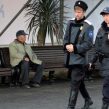
Moscow Supports Creation of Single Agricultural Cossack Enterprise in Stavropol Region
Publication: Eurasia Daily Monitor Volume: 13 Issue: 155
By:

In the past several years, Moscow has reinvigorated its efforts to unite the plethora of Cossack organizations in southern Russia. One of the most important issues dividing various groups of Cossacks has been their affiliation with the government. Some Cossack communities belong to so-called “registered” (reestrovye) and others to “public” (obshchestvennye) organizations. The former are officially part of the Russian government structure and play auxiliary military and police roles. The fate of the latter is highly dependent on their relations with local authorities and their constituents. The central Russian government has been pushing for the multiple groups to unify into a single Terek Cossack Force, which would operate under the auspices of Moscow.
Following the Kremlin-driven change in the leadership of the Terek Cossacks in 2015 (see EDM, March 18, 2015; May 11, 2015; February 3, 2016), the government is pushing to concentrate all Cossack resources under one umbrella—a policy that has aroused protests and scandals. The majority of the Terek Cossacks currently reside in Stavropol region, and there are around 160 Cossack communities throughout the region. Traditionally, Cossacks have resided in rural areas and relied on agriculture for subsistence. As a result, Cossacks currently control about 42,000 hectares of land in Stavropol, but those holdings are scattered across various small plots. The new Cossack ataman (chieftain), Alexander Zhuravsky, reportedly proposes to create an inventory of all Cossack lands, take them over, and lend them out to his associates (Kavkazskaya Politika, September 22).
Land ownership across the North Caucasus is, in general, a poorly regulated and explosive issue. Due to the scarcity of land and political concerns, regional authorities never legalized the private ownership of agricultural land in the region. Hence, farmers have to go through a tortuous process of acquiring short- and long-term rent rights. Since land ownership is not monetized but “bureaucratized,” land-related corruption is rife across the North Caucasus. For example, Cossacks have been quite active in Kabardino-Balkaria in their attempts to reclaim rights to what they consider to be their “native” Cossack land. But they have encountered numerous semi-legal obstacles and outright opposition from the regional bureaucracy (Kavkazskaya Politika, July 31).
The socio-economic status of the various Cossack organizations is also unclear, which makes land-related disputes even more complicated and prone to government bureaucrats’ manipulation and corrupt practices. For example, Cossack communities have the official status of non-profit organizations. According to Russian legislation, they cannot directly engage in commercial activities. They can, however, hand over their lands to the individual members of the Cossack communities and establish commercial organizations. Stavropol’s land code stipulates that the government should allot agricultural lands to Cossacks, bypassing auctions “for agricultural production, preservation and development of the traditional way of life and economic activities” of Cossacks. The Cossacks, however, complain that the government does not follow its own laws (Kavkazskaya Politika, September 22).
The legal formula for supporting the Cossacks’ “way of life” is in itself quite a puzzle: potentially, it can be used as a precedent for other ethnic groups in Russia, especially, in the North Caucasus. In other words, dozens of ethnic groups in the North Caucasus could also try to claim land rights to preserve their way of life and their traditions. The legal riddle does not end there. Many Cossacks nowadays belong to “registered” communities, which are officially designated and supported by the Russian state. If Cossacks are an ethnic group, then it is unclear why the state should register them or why the president of the country would be allowed to appoint their atamans. On the other hand, if Cossacks are not an ethnic group, then it is unclear what “way of life and traditions” they are trying to protect or why Stavropol region should prioritize the Cossacks, at least on paper, before other potential land bidders.
Even in Kabardino-Balkaria, where Cossacks have no legal right to receive lands without public bidding, they still claim land rights on the basis of their Cossack identity (Kavkazskaya Politika, June 4). In the non-Russian republics of the North Caucasus, land ownership quickly acquires the flavor of ethnic rivalry; but the conflicts over land in Stavropol region are also quite fierce, even when both conflicting sides are Cossacks. The new leadership of the Cossacks appears to be directly involved in resolving land disputes among its subordinates. In one such case, the ataman, Zhuravsky, reportedly dispatched a team of harvesters to gather the wheat on disputed land in the village of Tersky, in Budyonnovsky district of Stavropol region. The scandal also indicated that some shrewd individuals are using Cossack identity for material gain without providing anything in return to the Cossack communities (Kavkazskaya Politika, July 19).
Constant financial scandals and haggling over land and other material resources have become emblematic of the Cossacks in the North Caucasus. A large part of the problem is the government’s ambiguity about who the Cossacks are. Moscow does not want to grant ethnicity rights to the Cossacks, which would then undermine their “Russianness.” Many of the Cossacks in the North Caucasus derive from ethnic Ukrainians and speak so-called “mova”—a version of the Ukrainian language. Russian authorities certainly do not want to overplay this fact. At the same time, Moscow is trying to maintain some unclear Cossack identity that could be conveniently put to use to provide them with special rights whenever it is deemed useful by the Russian state.




